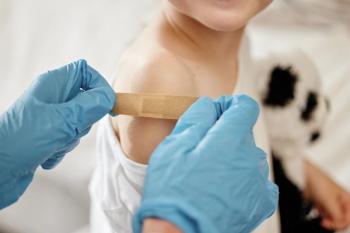Although pneumococcal conjugate vaccines (PCV) have reduced invasive pneumococcal disease (IPD) worldwide, the coverage is still not optimal, according to results of a study published in the Journal of Infection and Public Health. Serotype 19A is still the most prevalent serotype for pneumococcal disease, so the study authors call for additional studies to determine the full burden of IPD.
Investigators of the study aimed to determine the serotype distribution as well as the antimicrobial resistance in children who were hospitalized in Lima, Peru, with IDP from 2016 to 2019, particularly after the introduction of PCV13. Further, they wanted to compare serotype 19A with other serotypes and identify the serotype evolution over time, especially during and after the vaccine’s introduction.
The study, IPD3, included 7 national hospitals and 7 private clinics between November 2016 and December 2019. The investigators collected cultures that were positive for Streptococcus pneumoniae and hospital medical records were used for demographic and clinical characteristics of patients in the study. For the before and after PVC introduction, they used data from 2 previous studies, IPD1 and IPD2, which included data from 2006 and 2008 and 2009 and 2011, respectively.
Key Takeaways
- Pneumococcal Conjugate Vaccines (PCV) Impact on Invasive Disease: The study highlights the impact of pneumococcal conjugate vaccines (PCV) in reducing invasive pneumococcal disease (IPD). The introduction of PCV13 has shown positive effects, emphasizing the importance of vaccination efforts.
- Serotype 19A Prevalence and Clinical Implications: Despite the overall reduction in IPD, serotype 19A remains a significant contributor to pneumococcal disease, indicating the need for ongoing research to fully understand its burden.
- Challenges in Vaccine Coverage: The study underscores the challenge of achieving optimal vaccine coverage. Despite the availability of PCV, the coverage rates are suboptimal, and a notable proportion of children with IPD had not received the vaccine or had an unknown vaccination status.
There were a total of 85 positive samples from pediatric individuals with IPD during the collection dates. Investigators estimated that the annual IPD incidence rate for those aged less than 24 months was approximately 6.05 per 100,000 children in 2017, 5.09 per 100,000 in 2019, and 4.14 per 100,000 in 2019, according to the results. For children aged less than 60 months, the incidence rates were 5.38 per 100,000, 3.69 per 100,000, and 3.13 per 100,000, respectively.
The study authors reported that nearly 50% of all cases collected were from serotype 19A, which would translate to 1.53 per 100,000 children aged less than 24 months and 2.09 per 100,000 children aged less than 60 months. Furthermore, the children with serotype 19A included in the study had a lower rate of meningitis at 4.8% compared to 32.6% for those infected with other serotypes, higher rates of pneumonia at 80.9% compared to 34.9%, and more complicated pneumonia at discharge at 61.1% compared to 24.3%, according to the results of the study. Investigators found that the fatality rate was the same for all serotypes.
Approximately 87.2% of children with IPD in the study had at least 1 dose of any PCV. Investigators could not identify the vaccine for 24.7% of children and 45.9% received PCV13. Approximately 28.6% of children who had at least 1 dose of PCV13 had serotype 19A while 62.8% had other serotypes. Out of the 12 children infected by serotype 19A, only 7 were fully immunized with PCV13, according to the study authors.
Additionally, investigators found that there were higher antimicrobial resistance rates to penicillin, azithromycin, trimethoprim sulfamethoxazole, tetracycline, and clindamycin for those infected with serotype 19A compared to other serotypes.
Furthermore, over the total surveillance time of 2006 and 2019, investigators found that the frequency of serotype 19A increased as did serotypes not included in PCV13. However, they found that serotypes in PCV7 and PCV10 have decreased over time.
Reference
Ochoa TJ, Del Águila O, Reyes I, Chaparro E, et al. Streptococcus pneumoniae serotype 19 A in hospitalized children with invasive pneumococcal disease after the introduction of conjugated vaccines in Lima, Peru. J Infect Public Health. 2023. doi: https://doi.org/10.1016/j.jiph.2023.10.047















































































































































































































